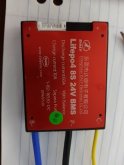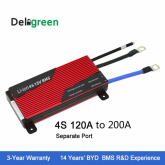ScoTTyBEEE
New Member
- Joined
- Sep 23, 2019
- Messages
- 112
I just recently purchased the DALY 200A BMS separate port. My thinking was I need to pull around 140a maximum for an induction cooker, so this is suitable. I bought the separate port so that the charging side wasn't disconnected leaving the mppt disconnected from the batteries in an event where the load side had a problem.
I've further read the really crap information about these BMS's and it seems the 200A separate port has an 8A charging port, which is waaaay too low to be useful for anybody as a single system.
With this in mind, and the fact it's already in the mail, would it make sense to purchase a 60A common port and use this for the charging side, and continue to use the 200A for the load side. I can't see any real issues here and I may get the advantage from the 35ma balancing current being doubled to 70ma if both bms's can operate together.
Essentially I'll have the large bms handling all situations of low voltage and the smaller one handling the top end. Also being completely separate it will resolve any issues of the mppt being disconnected during under voltage protect.
I've further read the really crap information about these BMS's and it seems the 200A separate port has an 8A charging port, which is waaaay too low to be useful for anybody as a single system.
With this in mind, and the fact it's already in the mail, would it make sense to purchase a 60A common port and use this for the charging side, and continue to use the 200A for the load side. I can't see any real issues here and I may get the advantage from the 35ma balancing current being doubled to 70ma if both bms's can operate together.
Essentially I'll have the large bms handling all situations of low voltage and the smaller one handling the top end. Also being completely separate it will resolve any issues of the mppt being disconnected during under voltage protect.






